

S UTHERN ISA SOUTHERN ISA
Southern Chapter Report
by Skip Kincaid, Southern Chapter Executive Director
In case you missed it, summer is here! My guess is that you have not missed it, though. Most of us work outside, and it’s the extreme weather that makes us a hardier stock than most! While many of us keep an eye on the weather for our own comfort, some of us do so because our very life, and the lives of many around us, rely on good preparation and common-sense safety awareness. And with weather being a big part of the headlines these days, those of us who work outside are keenly aware that preparation is key.
And so it is that the Southern Chapter board and staff are working hard to prepare for the current and upcoming season of events and opportunities to further your professional development. (See what I did there?) We do have a lot going on, and I will try to briefly explain what that means.
Our biggest challenge (opportunity?) lately is preparing for the new data management system at the ISA home offices in Atlanta. The old system of tracking data needed a well-deserved rest and upgrade. You likely read about this in the emails ISA sent to its members and credential holders in the last few months. While the new system will do a much better job of tracking CEUs for credential holders, it will have a robust ability to streamline CEU applications for event hosts, registering for exams and TRAQ courses, etc. It will seem a bit clunky at first. Change is hard, and I must admit that as an old man, I might be slowest at adapting. But we’ve needed this for a long time, and ISA has made considerable investment in time and dollars to be sure you receive timely and accurate service. So be patient. We will adjust and make the transition to the new system easy for you.
We’ve added a bunch of TRAQ opportunities in the last few months. Demand is high, and nearly all of them have filled up! There is a virtual renewal course scheduled for September 30 that still has seats available. Course offerings can always be viewed on the Chapter website’s upcoming events page. This calendar includes all of the educational opportunities that we are aware of in the coming months. Some are hosted by the Chapter and others are developed and hosted by the large network of educators we work with every day.
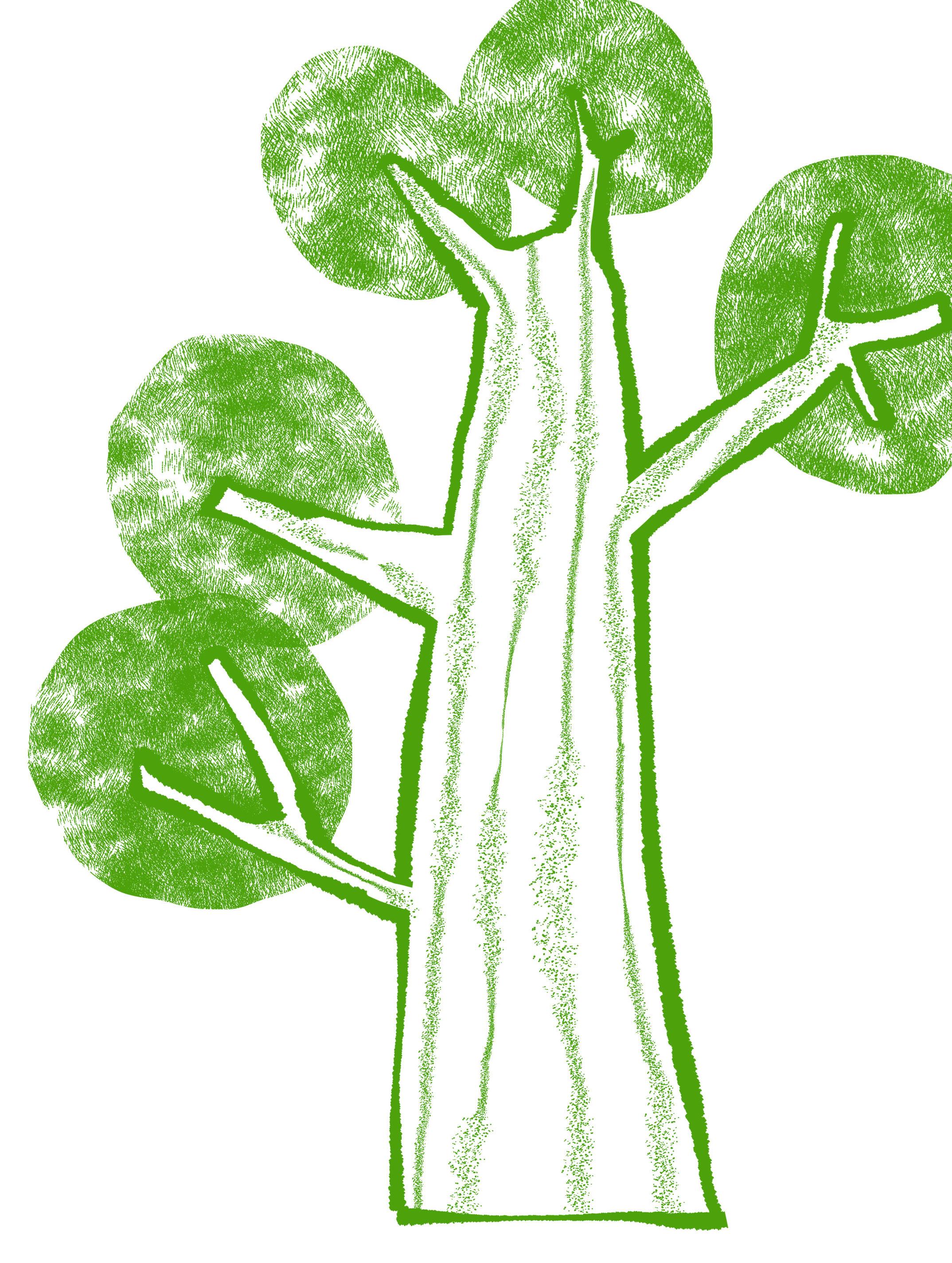
Likely the most exciting news are the two workshops that Southern Chapter is providing. The first is a two-day “Tree Biomechanics Workshop” in Baton Rouge, LA, on September 26-27. Frank Rinn, the primary presenter, will share his knowledge about tree decay, strength loss, response growth, and more. His material is common throughout much of ISA’s training manuals for professional credentials. We have some great sponsors for this event that will keep registration fees very low.
Our second workshop is a “Prescription Pruning Qualification” course that will be held in Charlotte on November 17-19. PPQ has become one of the most sought-after professional credentials. Developed by the ISA Florida Chapter, the course is offered nationwide now. Southern Chapter hosted a PPQ course in Memphis this past spring and plans to offer more in the coming months. The Charlotte course will feature Dr. Ed Gilman, another industry leader, and Nick
Markley out of Ohio. The PPQ course is offered as a three-day course for ISA Certified Arborists who want to earn the PPQ credential. It’s geared for prescribers, those who assess the needs of a tree and the tree owner’s goals, and then assemble a pruning prescription. There is also a one-day course option for producers, those who are in the tree making the pruning cuts. It’s very typical for a company to send a few of their staff through the prescribers class and then have several more in the oneday producers class.
See more details about registration for these two workshops in the calendar section of this newsletter. And you can always find details on the Chapter website Speaking from experience, don’t delay in registering. These classes will fill up, and registration will close once they reach capacity.
Yup, we’re busy and we’ve been doing our best to prepare you for your professional journey. Remember to be patient with each other and be patient with us as we get used to the new ISA data system. So much to learn!
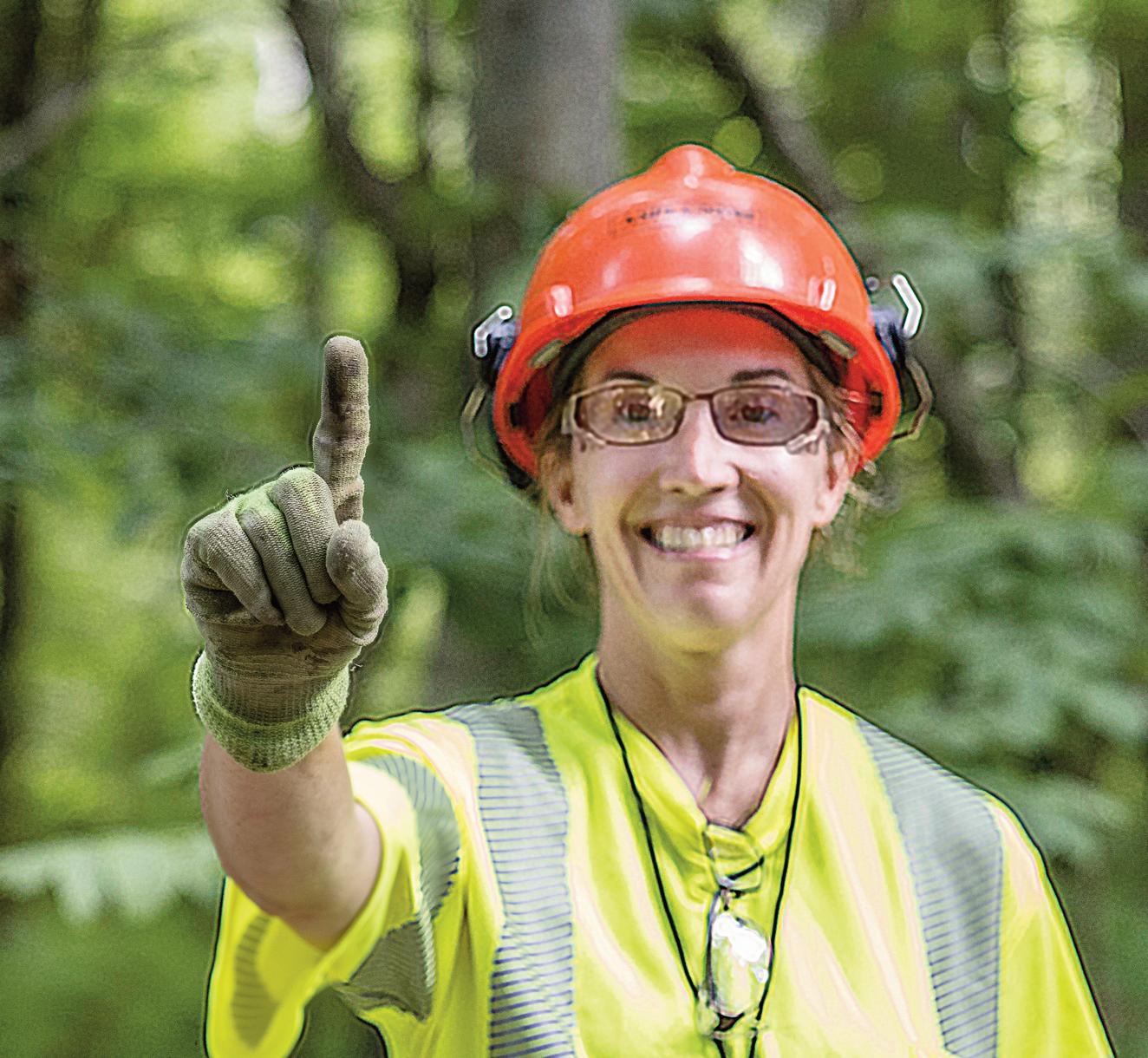


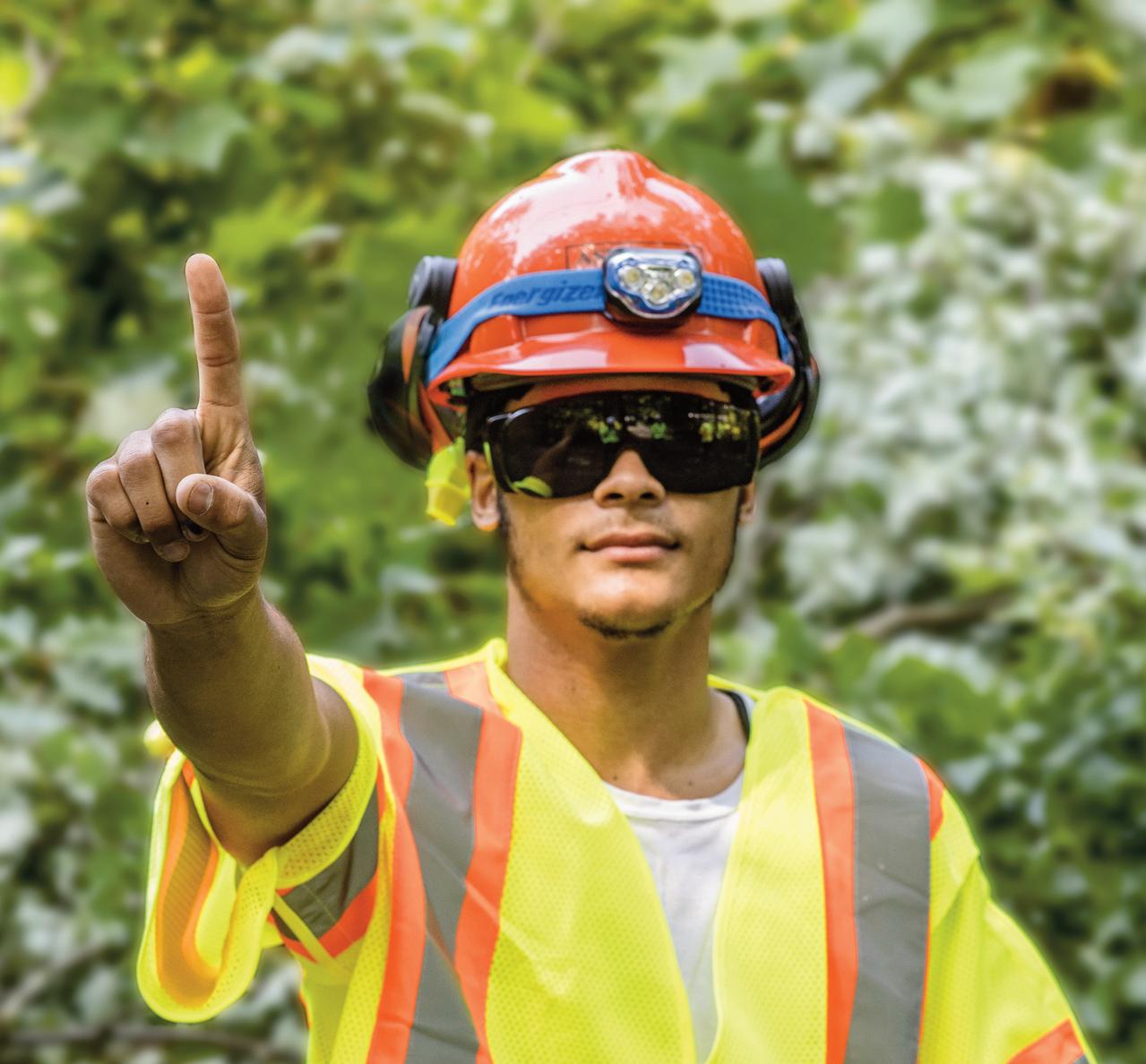
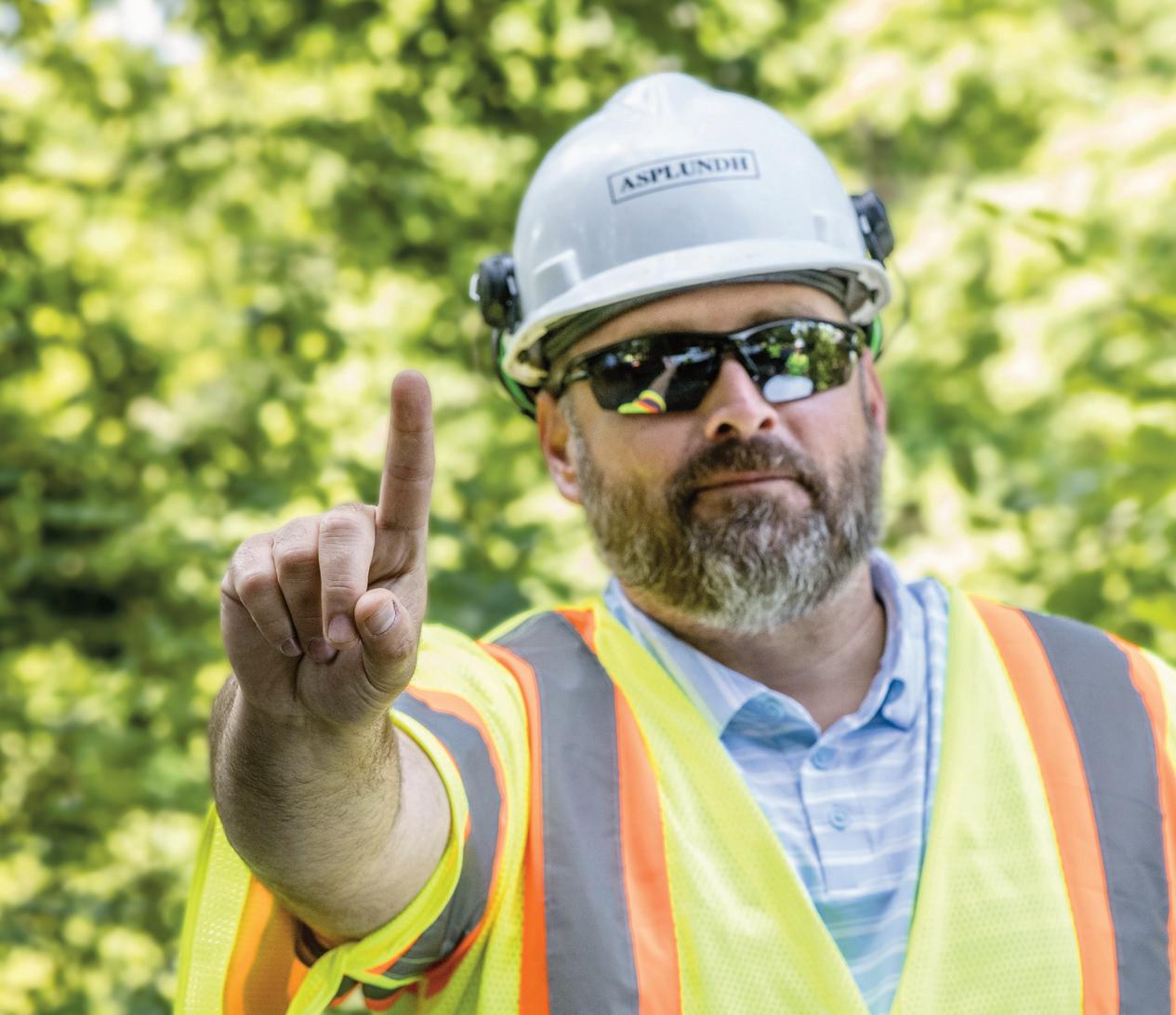

Message to the Membership
Chris Diffley, Southern Chapter President
It’s hot as *insert your favorite saying here.* As we reach the midpoint of the year, I want to thank each of you for your continued commitment to advancing arboriculture across the Southern Chapter. The work being done continues to raise the standard for our profession, myself not withstanding.
This fall, we’re pleased to host another Biomechanics and Decay Workshop featuring Frank Rinn and Dr. Chris Luley in Baton Rouge. Both are internationally recognized for their contributions to tree risk assessment, decay detection, and wood structure analysis. The workshop will offer a balance of theory, practical application, and discussion—a valuable opportunity for anyone involved in diagnostic work, risk communication, or research. More details will follow shortly if they haven’t already shown up. I went a couple years ago and still refer regularly to my notes from the event. Highly encourage anyone wanting to gain more knowledge to register.
We’ll also be hosting another offering of the Pruning Prescription Qualification, a new training aimed at helping arborists develop site-specific, outcome-driven pruning plans. This initiative is especially relevant for those writing or implementing specifications in municipal, consulting, or utility contexts, and the field arborists completing the work. Check out my other article for some more details and watch for the announcement of the full schedule, location, etc ...
As always, I encourage you to check our website for a full list of upcoming chapter events, workshops, and opportunities for CEUs. We continue to work on expanding programming that meets the needs of both experienced professionals and those new to the field.
I’d say stay cool, but that isn’t possible. Just stay alive. It’s ridiculous outside right now.
Manifesting super chilled regards,
Chris Diffley
Coming This Fall: Pruning Prescription Qualification in Charlotte
This fall, the ISA Southern Chapter will host the Pruning Prescription Qualification (PPQ) course in Charlotte, North Carolina—a professional development opportunity aimed at bringing more structure (and fewer shrug-based pruning decisions) to arboricultural practice.. For those not yet familiar, the PPQ is a structured, objective-based approach to tree pruning—intended to replace the more traditional method of vague hand gestures and phrases like “just thin it out a little.” Developed in alignment with ISA’s Best Management Practices, the course introduces a consistent framework for evaluating trees and writing sitespecific pruning prescriptions. It’s very official. There are binders.
& PPQ BBQ
The event is being made possible through support from our local organizations here. The North Carolina Urban Forest Council and the Charlotte Arborist Association are providing both promotional and logistical backing, while the City of Charlotte has kindly stepped in to host the event at one of their facilities. It’s a good example of what can happen when local organizations coordinate around the idea that trees—and the people responsible for pruning them—deserve a little more structure.
There will be two tracks: a one-day option for producers (no test, you’re safe) and a threeday option for certified prescribers (exam included, unfortunately). Full details and registration information will be announced soon.
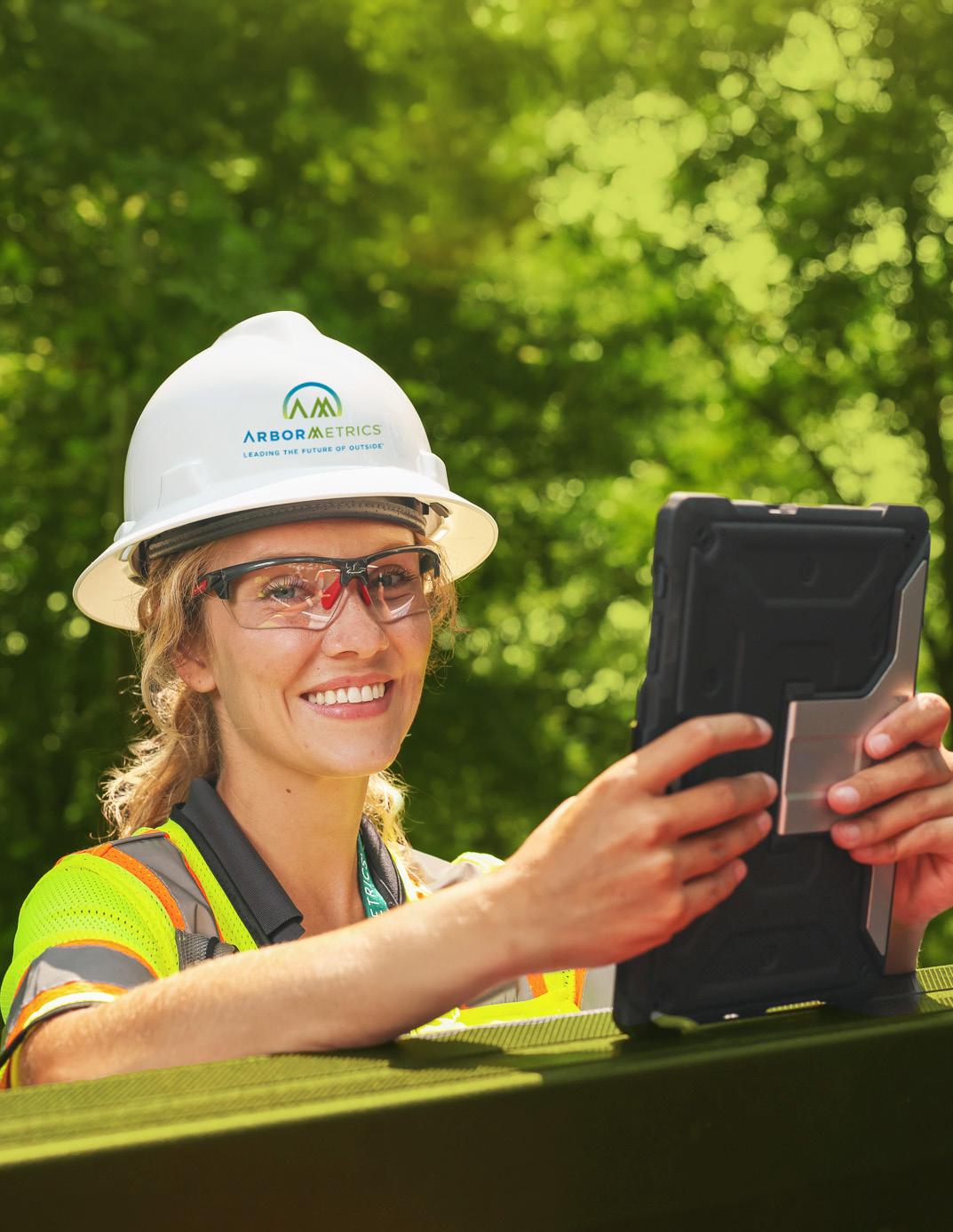
Rooted in legacy, reaching new heights
By Jennifer Hosken, Tom Hartzell, Caroline Petersen, Kayla Stuart, and Dr. Sharon Jean-Philippe
The Tennessee Champion Tree Program (TCTP) measures, protects, and documents the largest trees in the state of Tennessee. This program is funded annually by the Tennessee Department of Agriculture's Division of Forestry and led by School of Natural Resources (SNR) Master’s Candidate, Kayla Stuart. and SNR Professor of Urban Forestry, Dr. Sharon Jean-Philippe.
The University of Tennessee SNR began administering the program in 2020. Since then, student interns have revitalized the program by updating the database and have increased engagement with Tennesseans from all walks of life.
A venture in 2024 involved developing pathways to replant genetic stock from native Champion Trees across the state. With the help of Dr. Scott Schlarbaum and the UT Tree Improvement Program, the TCTP began collecting seed from designated Champion Trees to grow for the Future Champions Program (managed by Tom Hartzell, an SNR Urban Forestry undergraduate).
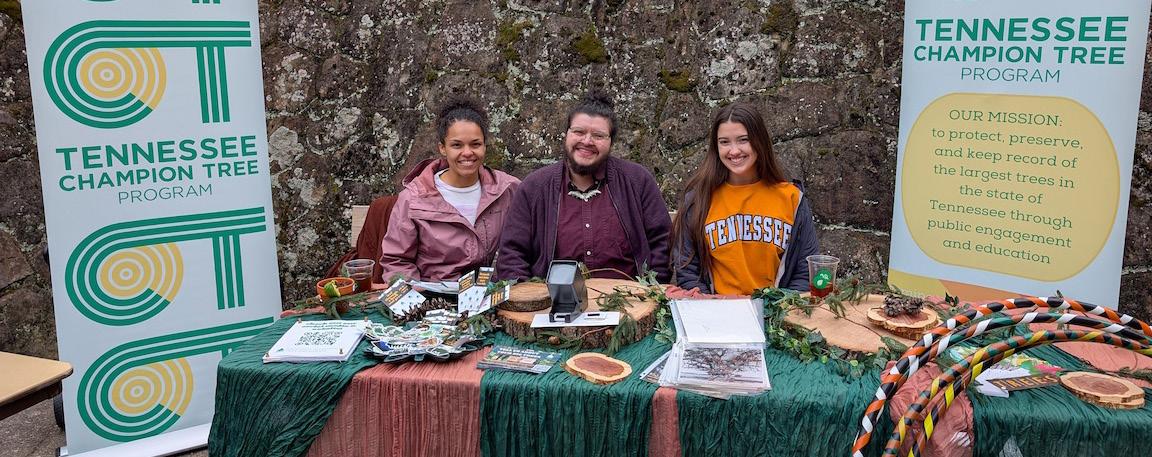

Student interns presented two posters at the 2025 Southern Chapter conference in Memphis. One poster highlighted the experiences of previous TCTP student interns who helped build the program into what it is today. The second poster examined the program’s social media outreach strategy to recruit new nominators. The program is proud to report that the TCTP has reached audiences across 10 countries and more than 8,000 miles away by focusing on educational, engaging, and accessible content.
The student intern team has successfully brought attention to Champion Trees beyond traditional forestry circles. The impact is measurable: 90% of Facebook followers reside outside the Knoxville area, and nomination numbers have surged year after year. The biggest increase in nominations occurred in our 2022 season, with a 123% increase in nominations.
These posters demonstrate how the TCTP allows students
interns to gain skills in communication, data management, GIS, fieldwork, tree propagation, and community engagement in their academic ventures and for their future careers. As one student intern reflected, “We didn’t have any sort of formula for filling out champion nominations—we learned by doing, and through that, we developed a real passion for trees.” Jenny Hosken, Digital & Social Media Specialist, engages with big tree enthusiasts through social media as well as inperson community engagement events. McKenzie Owen, former GIS Specialist, developed the poster's maps and charts which document how social media helped fill geographic gaps in participation, increasing nominations from historically underrepresented regions of the state. As student interns graduate and new students assume their roles, there is ongoing opportunities to expand and broaden the scope of the TCTP. Caroline Petersen (current GIS specialist) is witnessing firsthand through the development of public-facing ArcGIS StoryMaps and dashboards that communicate the program's impact in clear and accessible ways.
Owen Davids, Data Management Specialist, has combed through the Champion Tree inventory to ensure measurements, pictures, and information are properly reflected for the public to access on the website. This data encourages competition among nominators, new and old, allowing them to compare their nomination to the current Champion Tree.
Hands-on learning opportunities, digital storytelling, and detailing the important roles trees play in the lives of Tennesseans, urban forestry programs can broaden reach and impact. Through partnerships with state agencies and continued ISA engagement, the Tennessee Champion Tree Program is cultivating both future leaders and a more informed public.
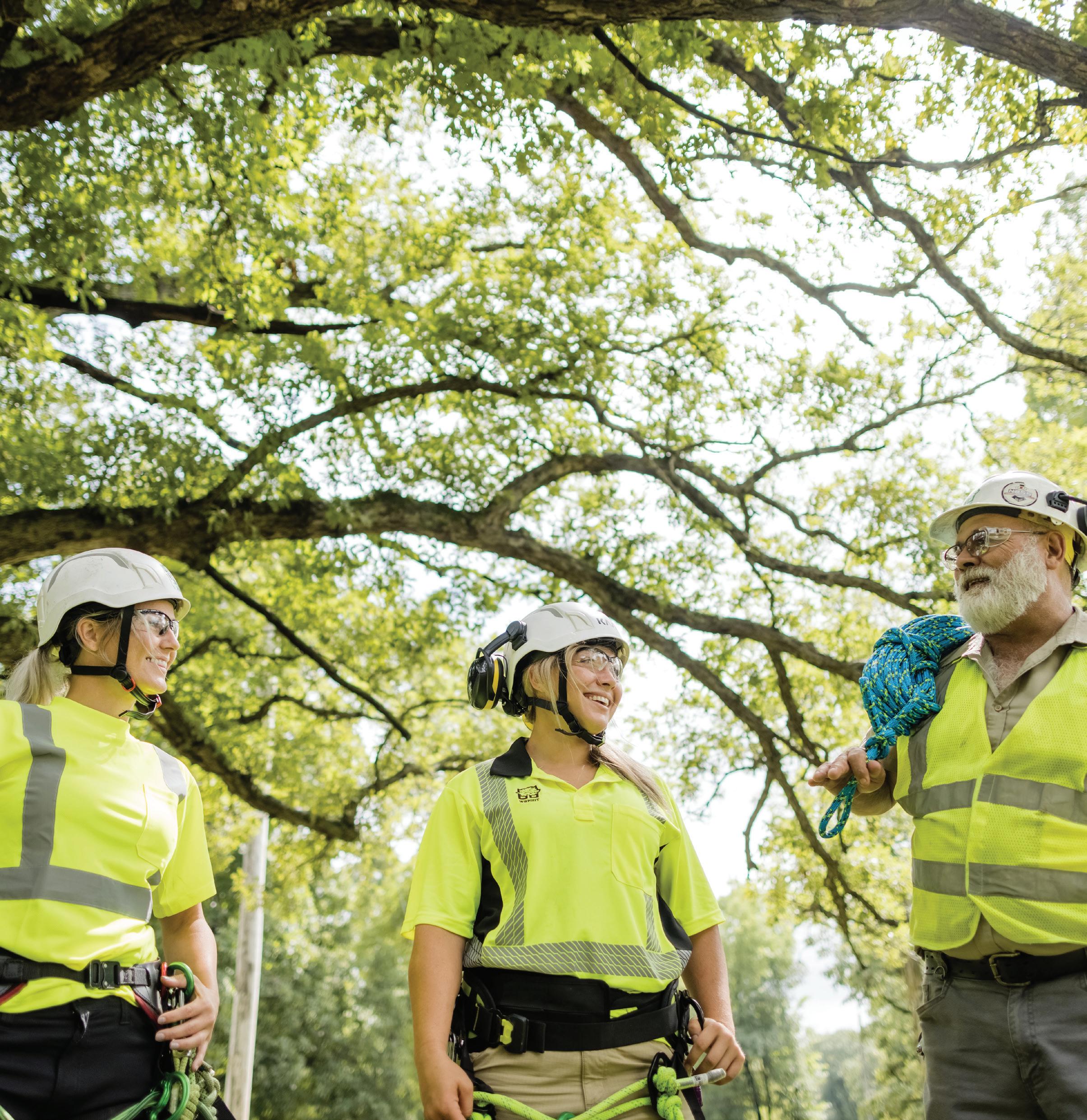






















Plan to join the ISA Southern Chapter at this high-level, two-day event featuring a premier expert in the arboriculture world, Frank Rinn.

Frank is known for literally writing the book and inventing the equipment that practitioners use to understand tree decay, tree responses to decay, and organisms responsible for decay. And he developed much of the tree biomechanics material used in professional credentials.
Tree Biomechanics Workshop
September 26-27, 2025
Baton Rouge, LA
REGISTRATION & MORE INFO
The workshop will run from approximately 8am - 4pm each day. Breakfast buffet and lunch will be provided both days. 14 ISA CEUs are pending. Register early! Seats are limited.
SPONSORS

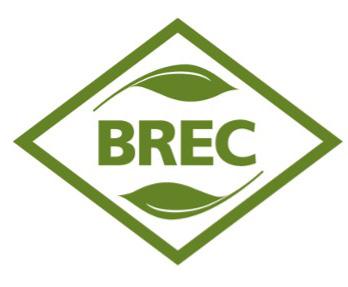
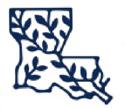

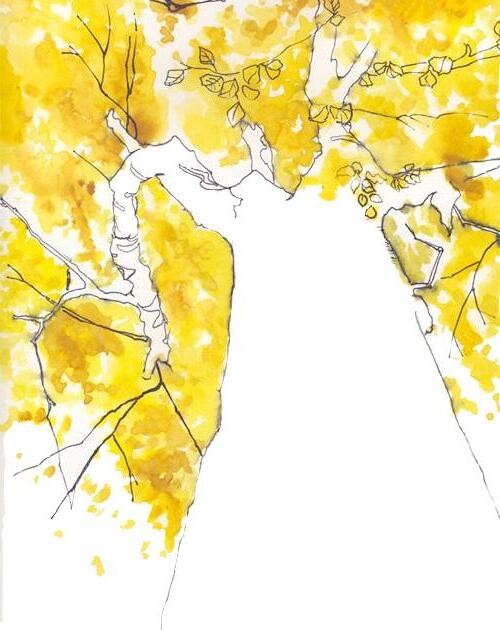

TREE Fund surpasses $6M
With the awards announced from the recent application cycle, Tree Research and Education Endowment Fund (TREE Fund) has surpassed the $6 million mark in funding tree research and education through its grant and scholarship programs.
TREE Fund was founded in 2002 via a merger of the ISA Research Trust and the National Arborist Foundation of the National Arborist Association (now known as the Tree Care Industry Association), with a mission to identify and fund programs that support the discovery and dissemination of new knowledge in arboriculture and urban forestry. TREE Fund has eight research grant programs, two education grant programs, and six student scholarship programs which provide arborists and researchers with the money they need to not only improve the health and care of trees in our urban forests but also keep the workers in the industry informed on the latest safety techniques, information, and best practices needed to do their jobs safely.
“We are very excited to have surpassed the $6 million mark in grant and scholarship funding. The support TREE Fund provides through our research and education grant programs helps improve best practices in the industry in plant health, worker safety, utility arboriculture, and more,” said Dr. Paul Putman, President and CEO of TREE Fund. “Our scholarship programs have helped dozens of new arborists complete their education with less of a financial burden, while encouraging a lifelong commitment to best practices informed by research.” read more

W. Jim Cortese has published his first book, John Muir Climbs a Tree and Other Tree Tales – An Anthology of Tree Stories, a book that celebrates humanity’s enduring relationship with trees. Through 32 diverse stories ranging from John Muir’s exhilarating ascent of a Douglas fir during a storm to Native legends, personal childhood memories, historical anecdotes, and reflective essays, this anthology explores how trees shape lives, landscapes, and legacies.
W. Jim Cortese, a lifelong professional arborist, infuses the collection with personal nostalgia, ecological insight, and admiration for the natural world. The anthology honors trees not only as biological marvels but as silent witnesses to human history, sources of solace, symbols of resilience, and bridges between generations. Whether it’s a mythic tale of transformation, a humorous childhood misadventure, or a scientific observation wrapped in narrative charm, each piece invites readers to reconnect with nature and reflect on their own “tree stories.”
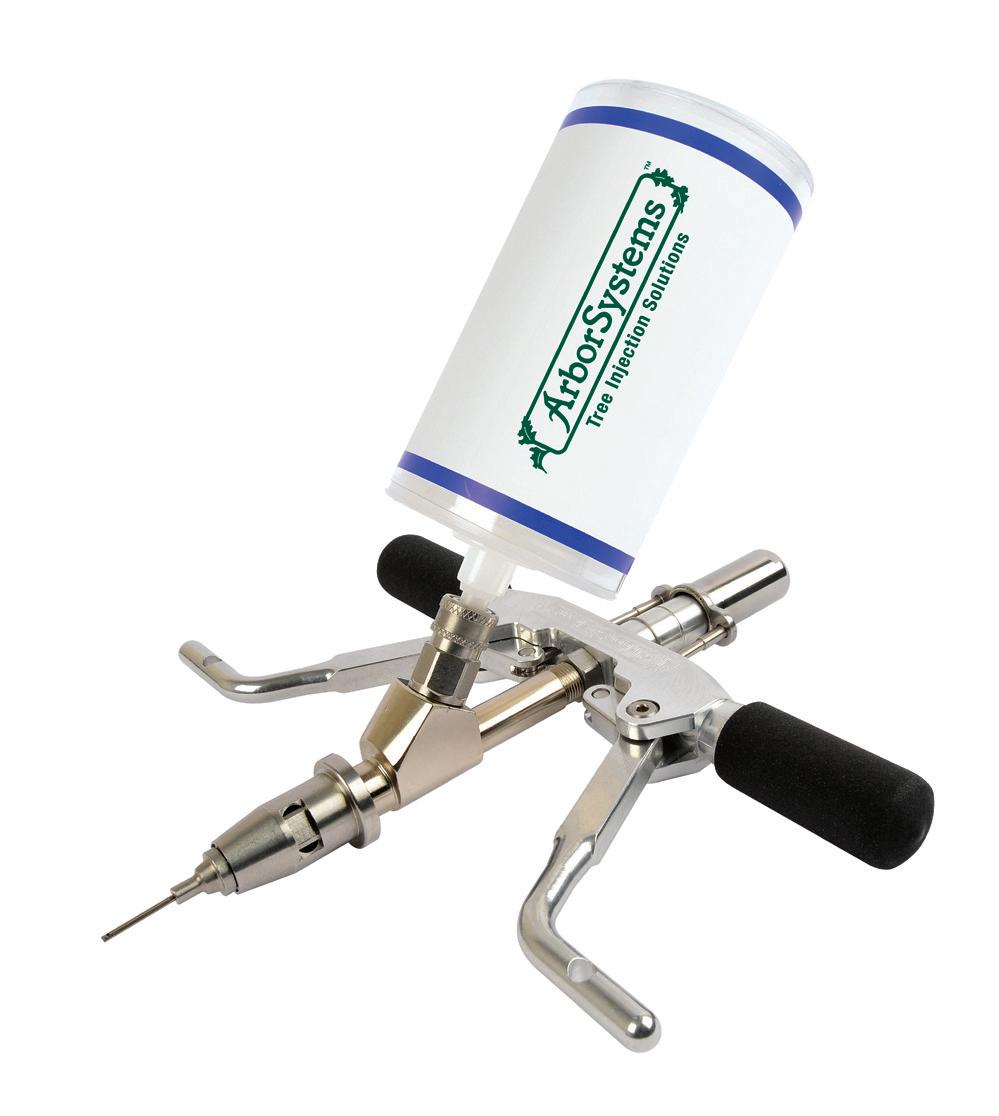
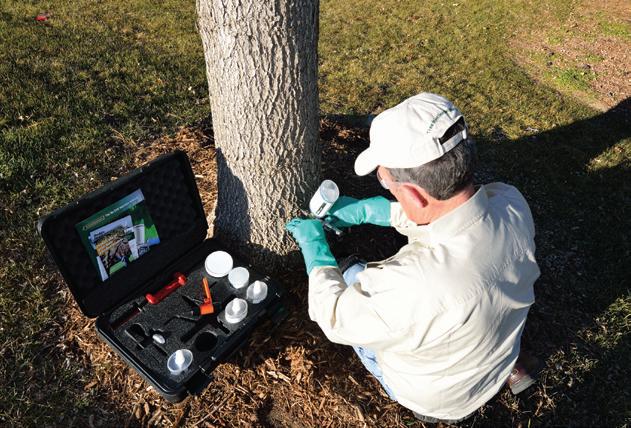
Shade tree losses and the federal tax code
by Stephen Dicke, MS Director
Knowing a little about the federal tax code may come in handy one day. This is especially true following a storm, fire, or other casualty. One part of the tax code has provisions designed to help property owners receive some financial assistance to speed up recovery. That includes shade tree damage. Common losses include out-of-pocket expenses for repair, removal, and restoration of damaged trees, along with a reduction in property value. A step-by-step guide leading toward a successful tax deduction for shade tree losses is provided in Casualty Losses of Shade Trees and Landscape Elements 2023 MSU Extension P3871. For a deep dive into the federal tax code and IRS regulations, you may visit the National Timber Tax website. Answers to tough questions can be found here.
The questions and answers below may help you identify the situations where your arborist skills can help your clients claim a casualty loss deduction. This article is for information purposes only. It is not a substitute for professional tax advice. Also, please note that any errors or omissions are mine and not the responsibility of ISA Southern.
1. What is a casualty loss?
A casualty loss is the actual loss of tangible property, like a tree, that is caused by an event that is sudden, unexpected, and unusual. Casualty events include fire, floods, hurricanes, ice, hail, and other storms. The amount of loss is defined as the property’s value immediately prior to the event minus its value immediately after the event. So, the quicker you can take photos and document status of the property prior to any clean up, the better.
The general rule for a deductible casualty loss is the lesser of (1) the decrease in fair-market value of the damaged property or (2) the property’s adjusted basis. The lesser of these two values is the deduction. Owners with large losses can get very aggravated once they realize their deduction will be small because their basis is small. Tax deductions are also reduced by any insurance or other compensation.
loss deductions. It also allows taxpayers to immediately deduct this year’s losses by amending last year’s tax return. To search for disaster declarations in your state or Puerto Rico, go to the FEMA website.
3. Does the owner hold his/her property for personal use?

The casualty loss deduction for personal use property like family homes was suspended through 2025. One exception is damage from a federally declared disaster. Following a federal disaster declaration, owners may deduct losses on personal use property up to their basis in the property. Here is the catch. Only losses that reach above 10% of the owner’s gross income + $100 are deductible. Too much income is a common limiting factor for a deduction. Note that the recently passed 2025 One Big Beautiful Bill may adjust some of these rules. For personal use property, the IRS defines the whole property as the one single identifiable unit that was damaged. Valuation of loss must be determined for the whole property as one unit. As a result, the IRS desires that losses be determined by real estate appraisers. The IRS contends that arborists are not qualified to appraise land and buildings. That is why the IRS can reject arborist valuations of shade tree loss on personal use property. My suggestion here is to work with a real estate appraiser to value shade tree losses. One piece of good news: family homes usually have a large basis, so a large tax deduction is possible.
4. Does the owner hold his/her property to make a profit?
2. What is a federally declared disaster?
When a large casualty event overcomes the resources of a state, the governor can request help from the federal government. The President of the United States then determines whether there has been enough damage to declare an event a federal disaster. A presidential declaration loosens up the tax code and allows personal-use property to qualify for the general rules for casualty
For property held for profit, the general rule for deducting losses applies. Property can be held by investors or businesses in all their diverse forms. Owners should be able to show that their expected income over time will exceed costs. That is the key to proving a profit motive.
On property held for profit, shade tree losses are valued separately from land and buildings. And depending on how property accounts are kept, tree losses may be separated or pooled together with other landscape damage. The IRS accepts arborists
as qualified to value shade tree damages. A great resource to help you meet IRS appraisal standards is the Guide for Plant Appraisal, 10th Edition, Revised by Council of Tree and Landscape Appraisers
A zero or low basis in the owner’s shade tree or landscaping account is a frequent problem. Remember the general rule, casualty losses are deductible up to the basis. So, unless the owner has basis in trees or landscaping, all your work valuing a casualty loss is practically worthless.
5. What is basis and how is it established?
Basis is the book value or what an owner has invested in the property. It rarely is the value of the property today. A helpful review is provided in Basics of Basis 2023 MSU Publication P1983 In the table below are examples of how property is acquired and the initial basis in that property. Over time, basis can change as portions of basis are deducted or new costs are capitalized.
How property was acquired Initial basis in Property $
Purchased Traded Inherited Gifted Planted
Total acquisition costs
Basis in traded property + boot, if any Fair market value at time of donor’s death
Basis held by donor
Cost of planting and establishing trees
Once basis is determined for a property, the owner may allocate portions of basis into depreciable and non-depreciable accounts for tax purposes. Non-depreciable property usually includes the land, trees, and other landscaping. Ideally, basis was established at the time of acquisition. But the tax code allows owners to establish basis in a retroactive style where all costs and values are backtracked to the date of acquisition.
After a casualty, one of the best things you can do for your client is to encourage him/her to seek professional tax advice. Then you, as the arborist, can be confident that your work is actually helping your client. And when your client receives a big tax deduction, you have a friend for life!

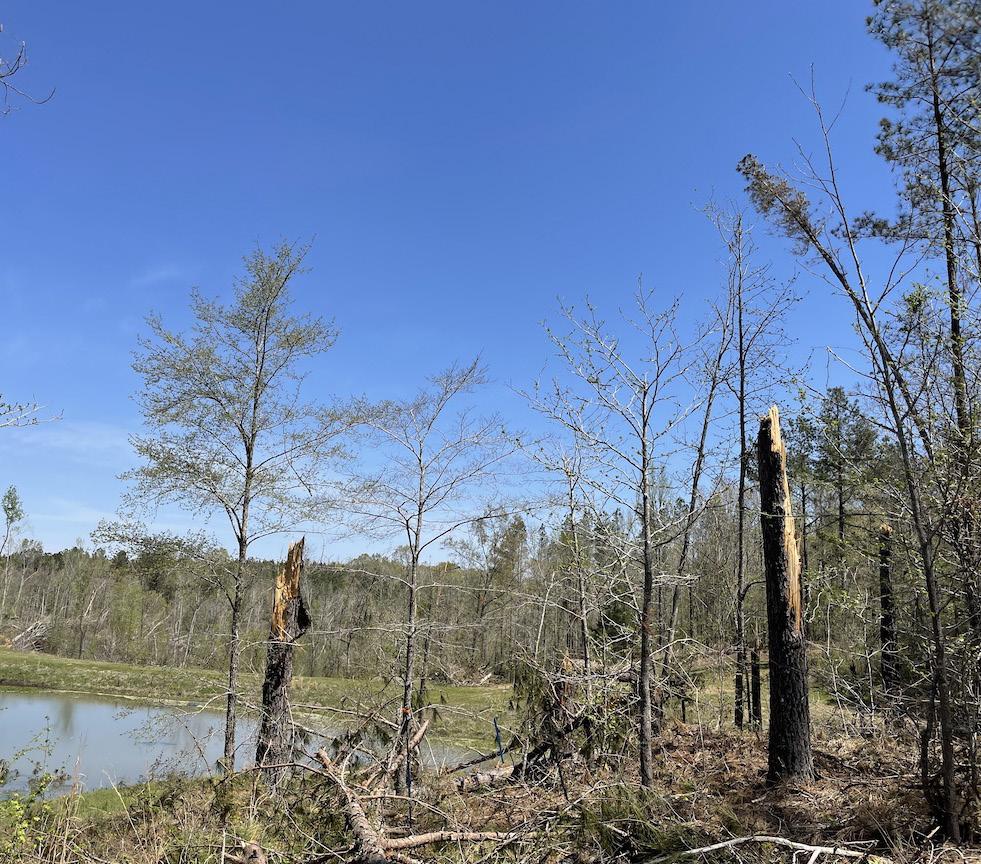
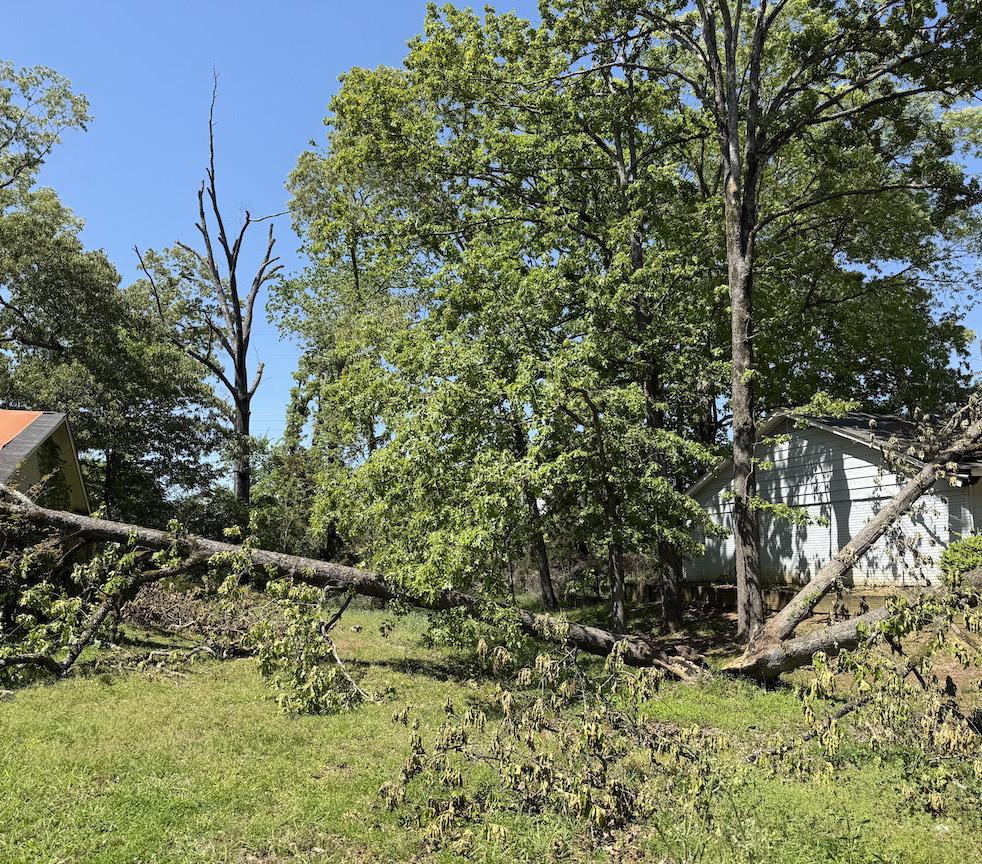
Honor someone who stands out in our industry
Check out the Southern Chapter’s online awards page for an impressive list of honorees, award criteria descriptions, and nomination form.
Award of Merit | Award of Achievement | Honorary Life Membership
Award for Excellence in Arboriculture Education
President’s Award | John G. Martin Award
Award of Arboricultural Research | Award for Excellence in Arboriculture
Memphis Urban Wood
Advancing Urban Tree Innovation in the Southern Region
by Kayla Stuart and Mike Larrivee
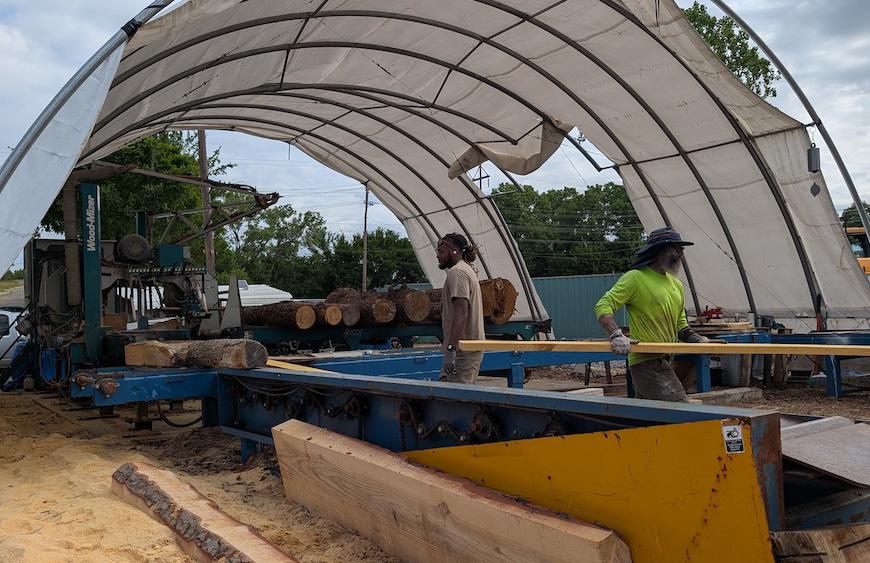
At the crossroads of Arkansas, Mississippi, and Tennessee, Memphis Urban Wood (MUW) is reshaping how the arboriculture and urban forestry community approaches the aftermath of tree removals and resource recovery. Rather than viewing felled trees as something to be chipped, dumped, or wasted, MUW is leading a movement that turns urban wood into an asset—supporting climate resilience, community development, and local economies.
MUW is currently seeking to partner with urban foresters, arborists, and the tree care industry in the tri-state region who are interested in an opportunity to put their “wood waste” to a higher use.
Rooted in the city’s history as the “Hardwood Capital of the World,” MUW’s efforts don’t aim to revive large-scale harvesting operations. Instead, they reflect a forward-thinking model for arborists: one that promotes a circular approach to the use of urban timber while reinforcing the core values of sustainability and stewardship.
Currently, through a partnership with Woodland Tree Service, MUW is a centrally located urban sawmill that processes logs brought onsite from Woodland Tree Service and turns them into merchantable lumber, compost, and firewood. All woody material brought onsite is put to use rather than sent into a landfill to release its stored carbon. This closed-loop system prioritizes environmental outcomes and economic opportunities without incentivizing unnecessary removals.
MUW’s operational model is designed around three key objectives:
n Reduce wood waste and sequester carbon by salvaging quality hardwoods from the waste stream.
n Reinvest in local canopy by channeling lumber revenues into tree planting and long-term maintenance in under-canopied areas.
n Support green workforce through training programs in urban wood utilization.
While based in Memphis, MUW serves the broader metro region—Shelby, Tipton, and Fayette counties in Tennessee; Crittenden County in Arkansas; and DeSoto County in Mississippi—and collaborates with municipalities, tree services, and community groups. This regional network is laying the foundation for scalable, replicable approaches to urban wood utilization across the Southern Chapter's footprint.
Turning Challenges into Opportunities
Hundreds of millions of board feet of urban wood are discarded in the U.S. each year, often chipped or burned despite their high commercial value. MUW doesn’t advocate for more removals, but rather for higher purpose uses of wood that is already being taken down. Their work illustrates how intentional material management can elevate the role of arborists in environmental innovation and local economic development.
To learn more or explore partnership opportunities, contact Patrick Gridley patrick@theworkscdc.org , (732) 470-4007

REASON #1 It’s the World’s Largest Tree Care Conference & Trade Show
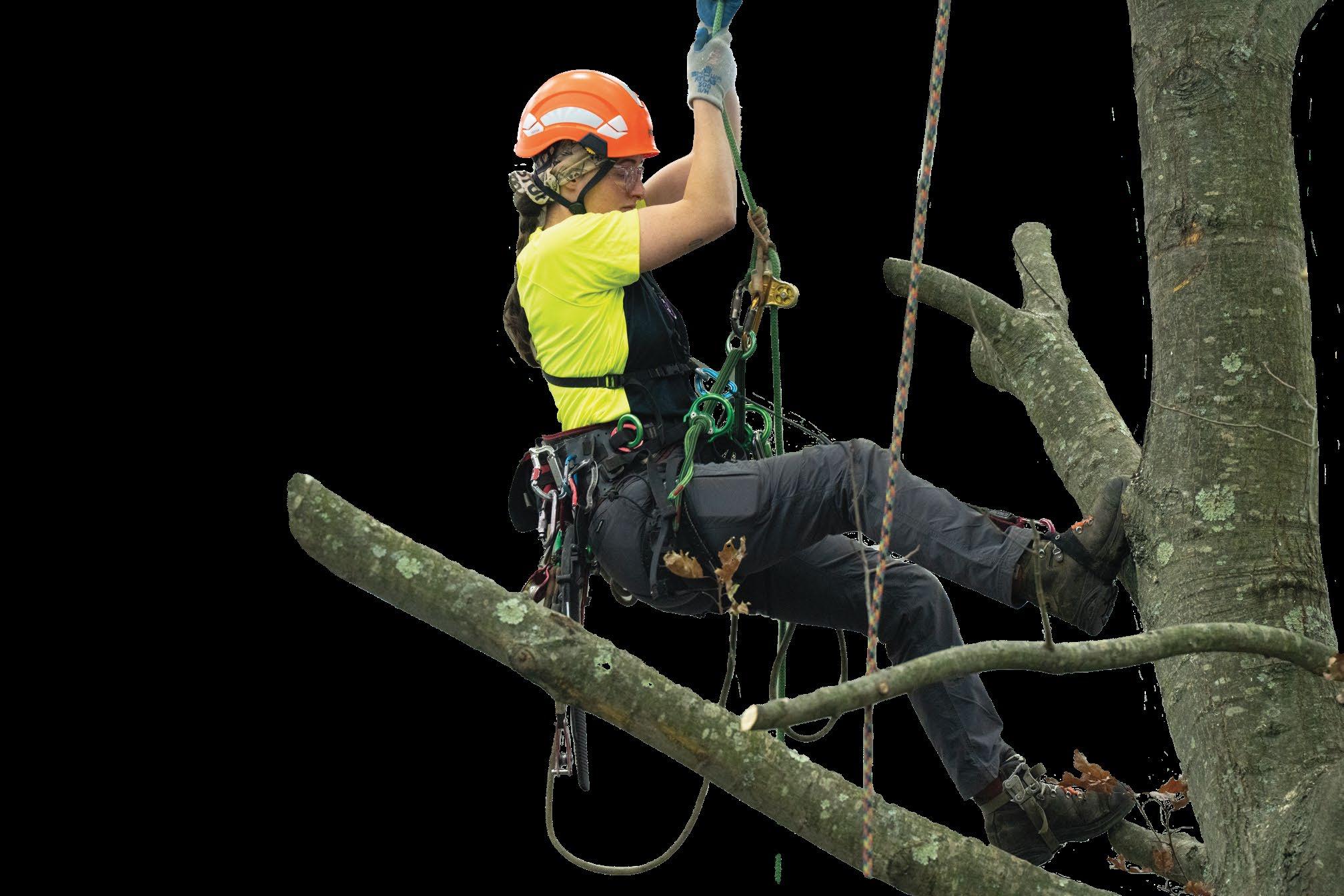
REASON #2
230+ exhibitors in 525,000+ sq ft

REASON #10
Experience 3 days of world-class educational sessions.

REASON #6
Meet thousands of fellow tree care professionals from all over the world.
Upcoming Events & CEU Opportunities
in the Southern Chapter Region
Check out all the new CEU opportunities listed in the next few pages of this publication. This list is kept current on the Southern Chapter website as well. Save the site to your “favorites” as an easy access portal for events and registration information. If you know of opportunities we haven’t listed, please share! Email skincaid@isasouthern.org and we’ll get it posted.
We have worked hard to partner with organizations to be sure you get a wide range of opportunities to stay sharp. This list contains upcoming events that we are aware of. All the courses and conferences listed provide opportunities to earn ISA CEUs that help you maintain your ISA certifications. ISA is also offering no-cost quizzes for articles to give you more opportunities to earn CEUs.
Webinar Developers and Hosts
TREE Fund
Urban Forestry Today
Forestry Webinars
Urban Forest Connections USDA Forest Service
Utility Arborist Association
North Carolina Urban Forest Council
Arborjet Webinars

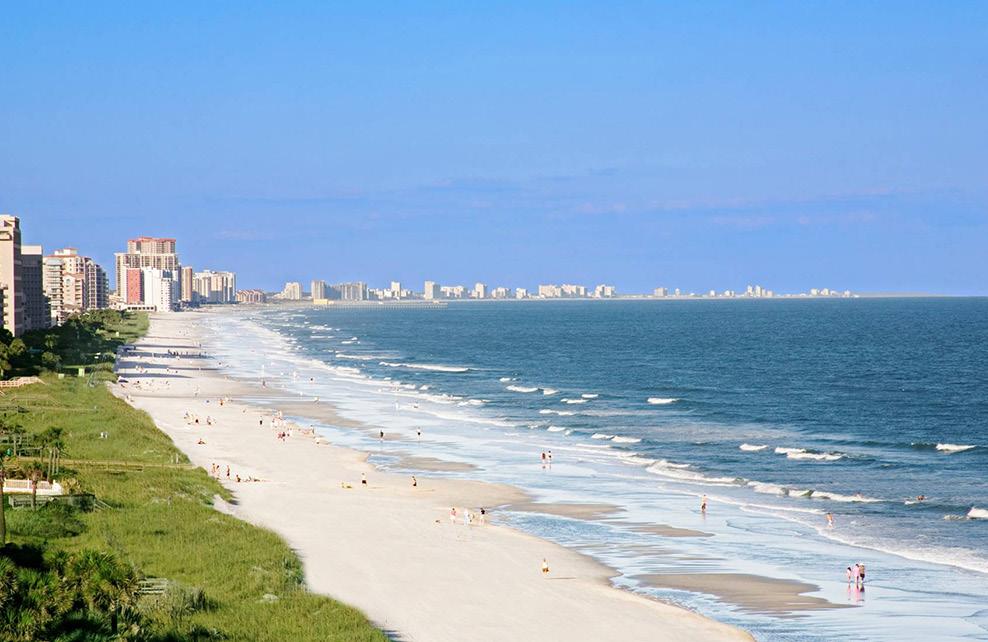

Educational Events
Most events are approved for ISA CEUs. Check each registration site for details.
August 6, 2025 9am - 4pm Eastern TRAQ RENEWAL VIRTUAL COURSE (online) REGISTRATION IS CLOSED
August 11, 2025 8am - 5pm TRAQ RENEWAL LIVE COURSE
Charlotte, NC REGISTRATION IS CLOSED
August 12-14, 2025
TRAQ 3-DAY COURSE FOR NEW APPLICANTS
Charlotte, NC REGISTRATION IS CLOSED
August 26, 2025 3:30-7:30pm ISA CERTIFIED ARBORIST, UTILITY SPECIALIST, MUNICIPAL SPECIALIST EXAM
Conway, AR
ISA Certified Arborist, Utility Arborist, and Municipal Specialist written exams are scheduled for Tuesday, August 26, 2025. Applicants for each exam must register by August 8, 2025 at the ISA website. If you’re new to ISA, you’ll need to create an ISA profile here. Registering for an exam includes 2 steps. First, you must complete an application for your selected credential. On your ISA profile, find the link “Apply for an ISA Certification.” Complete the application for your selected credential. Second, once the application is submitted and approved by ISA, you can register for an exam. Be sure to submit your application well in advance of registering for an exam as it can take several weeks to get a submitted application approved.
September 10, 2025 8:30am - 4:30pm 2025 Fall SCAW: PREPAREDNESS FOR THE NEXT NATURAL DISASTER STARTS NOW
Columbia, SC
Trees SC has developed a great agenda for this one-day workshop. Topics include storm related planning, planting, and assessing trees pre- and post-storm. Info and registration HERE
September 26-27, 2025 8am - 4pm TREE BIOMECHANICS WORKSHOP
Baton Rouge, LA
Presenter: Frank Rinn. Plan to join the ISA Southern Chapter at this high-level workshop cosponsored by the Recreation and Park Commission for the Parish of East Baton Rouge (BREC); Louisiana Community Forests; and Louisiana State University Ag Center. Consider attending if you are an arborist or someone with a keen interest in how trees grow, respond to stress, and how they fall apart! This two-day event features one of the premier experts in the arboriculture world. Frank Rinn is known for literally “writing the book” and “inventing the equipment” that practitioners use to understand tree decay, tree responses to decay, and organisms responsible for decay. Much of the tree biomechanics material used in professional credentials was developed by Frank. Be sure to register early. This event will sell out. 14 ISA CEUs are pending. Info and Registration HERE
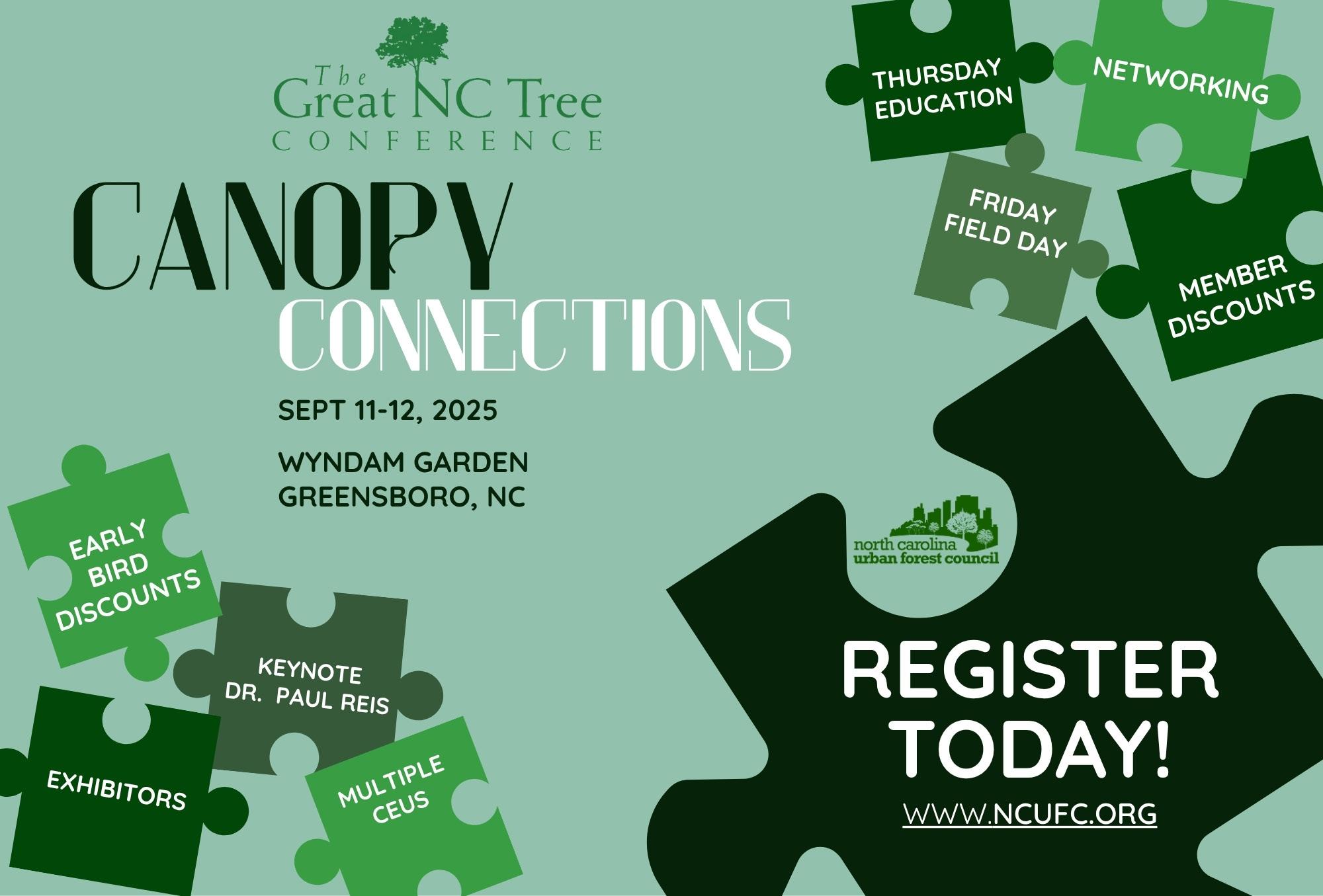
Educational Events (continued)
September 30, 2025 9am - 4pm Eastern TRAQ RENEWAL VIRTUAL COURSE (online)
Co-hosted event with ISA Southern, Texas, Georgia, Ohio, Iowa and Midwestern Chapters
This is a virtual renewal option and is only available for those who already have the TRAQ credential and their expiration date occurs within 18 months prior to the date of this course. The course fee includes all fees for the course and exams. After you attend the course, ISA will send you information about completing the exam process. Please read Virtual TRAQ Renewal Info for Candidates to be very clear about the course prerequisites and renewal requirements and details about the credential and the courses. Applicants for the course must register 30 days prior to the session they plan to attend. Registration will close when class capacity is reached or 30 days prior to the class, whichever comes first, so register early!
Only register for this course if you already have a current TRAQ credential and your TRAQ expiration date is after September 30, 2025. Do not register if your TRAQ credential will expire prior to the class date. Your eligible renewal window begins 18 months prior to your expiration date. Attending a renewal course and successfully completing the exams prior to your expiration date will result in five years added to your current expiration date.
If you register for a class date that occurs after your expiration date, you may not be notified of this mistake until 30 days prior to the course. Your registration will be cancelled and your registration fee will be refunded, less a $50 service fee.
This is the last TRAQ renewal course that will be offered. Click HERE to register for September 30, 2025, Renewal Course (Closes August 29 or when capacity of 40 is reached)

Scholarships up to $2,000 for students attending 2-year and 4-year college or university. MAY 1 DEADLINE


November 17-19, 2025 8am - 5pm
PPQ (PRESCRIPTION PRUNING QUALIFICATION)
Charlotte NC
Presenters: Dr. Ed Gilman and Nick Markley. This is a 3-day course which includes two days of training and demonstrations culminating in an exam. The successful candidate will receive the Prescription Pruning Qualification. You must be an ISA Certified Arborist to attend the qualification course. It is not required to attend DAY ONE.
This new pruning paradigm shifts the decision of which branches to prune from the production arborist to an informed prescriber. It establishes a protocol resulting in consistency between the arborist preparing the prescription and the production arborist. This credential teaches you how to prescribe and perform pruning in accordance with industry standards and ISA’s BMP. Two tracks are offered:
n PRESCRIBERS (Day One, Two, and Three: Nov 17-19)
Must be an ISA Certified Arborist. Prescribers attend Day One and then return for Day Two and the review and exams on Day Three. Days Two & Three focus on preparing pruning prescriptions using many examples which include outdoor exercises. This is an interactive program with many activities. There is a review and a multiple choice exam on the third day. Those passing the exam become PPQ Qualified.
n PRODUCERS (Day One only; Nov 17) - ISA Certification not a prerequisite. This is a one-day session with extreme value for those who work in trees. Producer attendees receive a certificate of attendance. There is no exam.
This course is a rising star in the arboriculture world. Plan to attend and register soon. We will reach capacity and sell out this course. Info and registration HERE
Scholarship Program
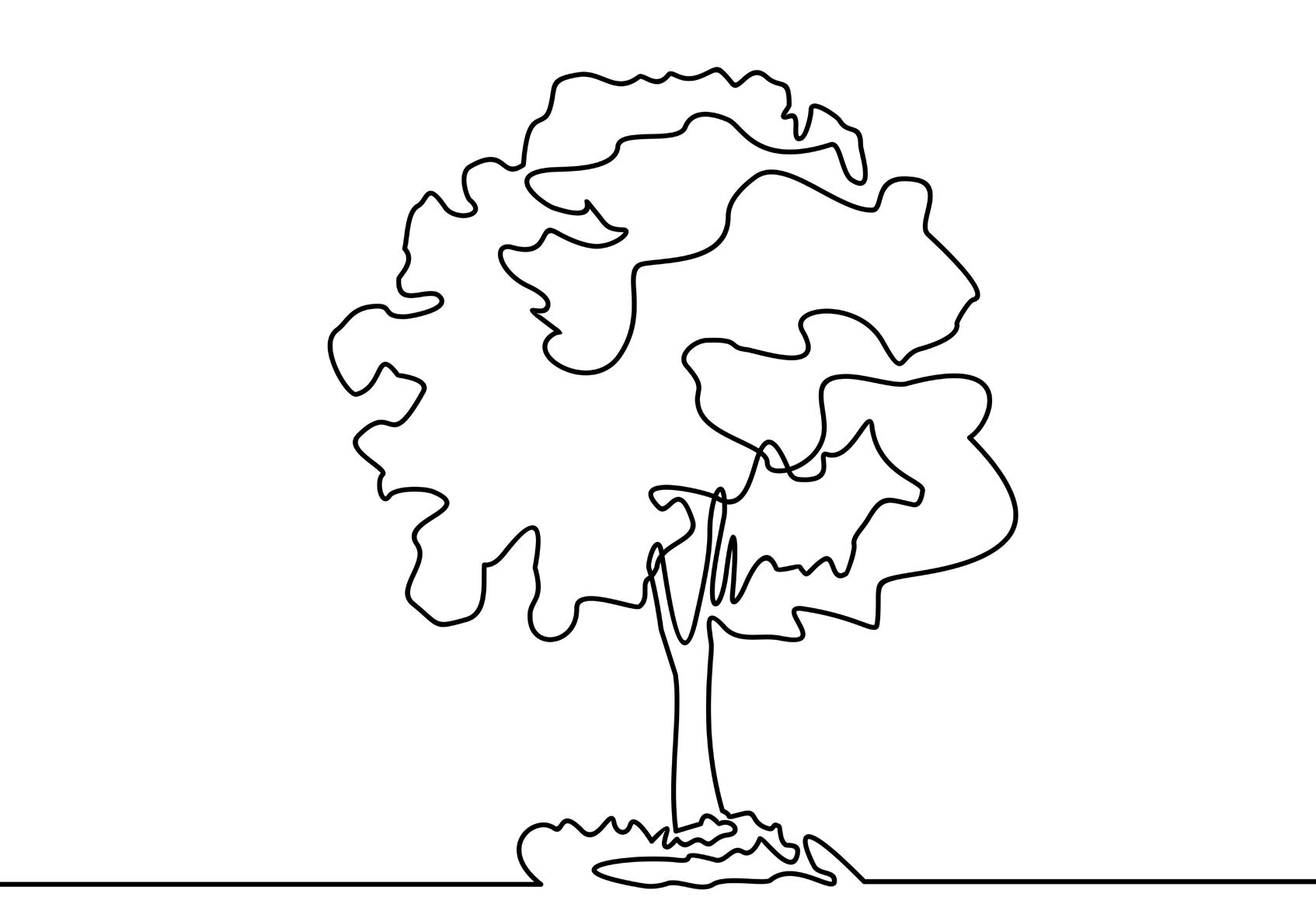
A scholarship is also available to assist with costs for a master’s student to attend ISA Southern conference. JANUARY 31 DEADLINE

November 19-20, 2025
PARTNERS IN COMMUNITY FORESTRY CONFERENCE
Hendersonville, Nevada
The Arbor Day Foundation's gathering unites passionate individuals, communities, organizations, and leaders to explore innovative solutions, share insights, and collaborate on the future of urban forestry. Join leaders across the industry as we focus on strengthening the bonds between people and trees, fostering sustainable practices, and creating green, thriving urban landscapes. More information HERE
December 12, 2025 8:30am-12:30pm Eastern ISA CERTIFIED ARBORIST, UTILITY SPECIALIST, MUNICIPAL SPECIALIST EXAM
Greensboro, NC
ISA Certified Arborist, Utility Arborist, and Municipal Specialist written exams are scheduled for Friday, December 12, 2025. Applicants for each exam must register by November 24, 2025, at the ISA website. If you’re new to ISA, you’ll need to create an ISA profile here. Registering for an exam includes 2 steps. First, you must complete an application for your selected credential. On your ISA profile, find the link “Apply for an ISA Certification.” Complete the application for your selected credential. Second, once the application is submitted and approved by ISA, you can register for an exam. Be sure to submit your application well in advance of registering for an exam as it can take several weeks to get a submitted application approved.

How to Regain Lost Customers
Losing customers is an inevitable part of doing business. It doesn't have to be the end of the relationship.
Service-based businesses, in particular, thrive on longterm client relationships. Every lost customer represents not just lost revenue, but lost trust and potential referrals. With the right customer win-back strategy, businesses can re-engage past clients, and rebuild relationships, thereby improving their chances of regaining lost customers.
Your work demands experts. We deliver them.
We’re invested in our people, the ones who help power the future and drive progress forward.
As experts in their field with a passion for nature, they’re never complacent in helping to deliver solutions on behalf of our clients and the communities they serve.
At Davey, our workforce is continuously developing and refining their skills through ongoing training, helping drive shared success for all. From evolving technology to developing safer work practices, we prepare for what’s coming—so you’re always at the forefront.
What keeps coming are compliance updates and technology evolution. And what’s vital is having a partner whose dedicated, highly trained people understand the complexity of the industry now and in the future.
That’s real power.
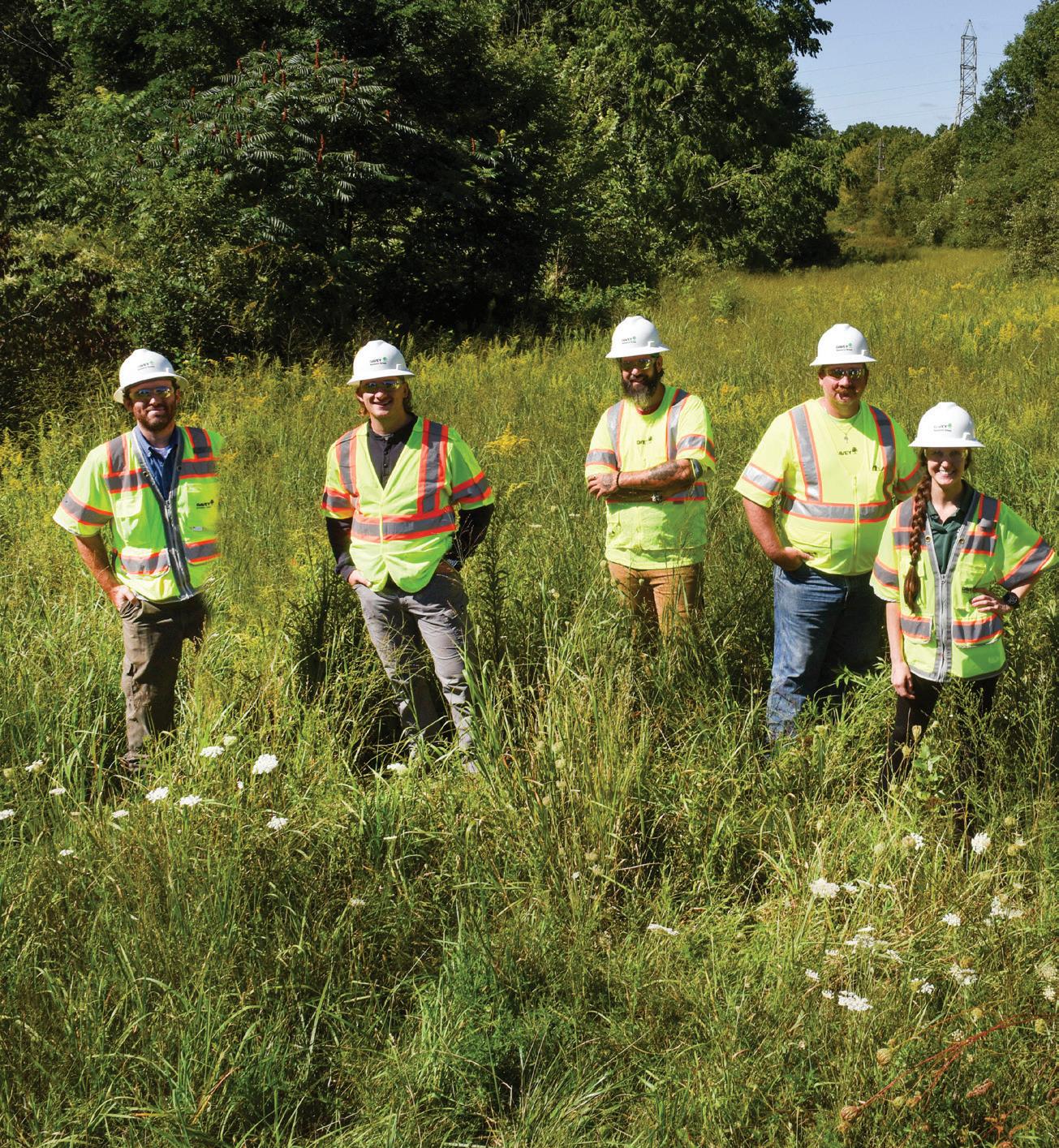
See how our training and advancements work together for you.

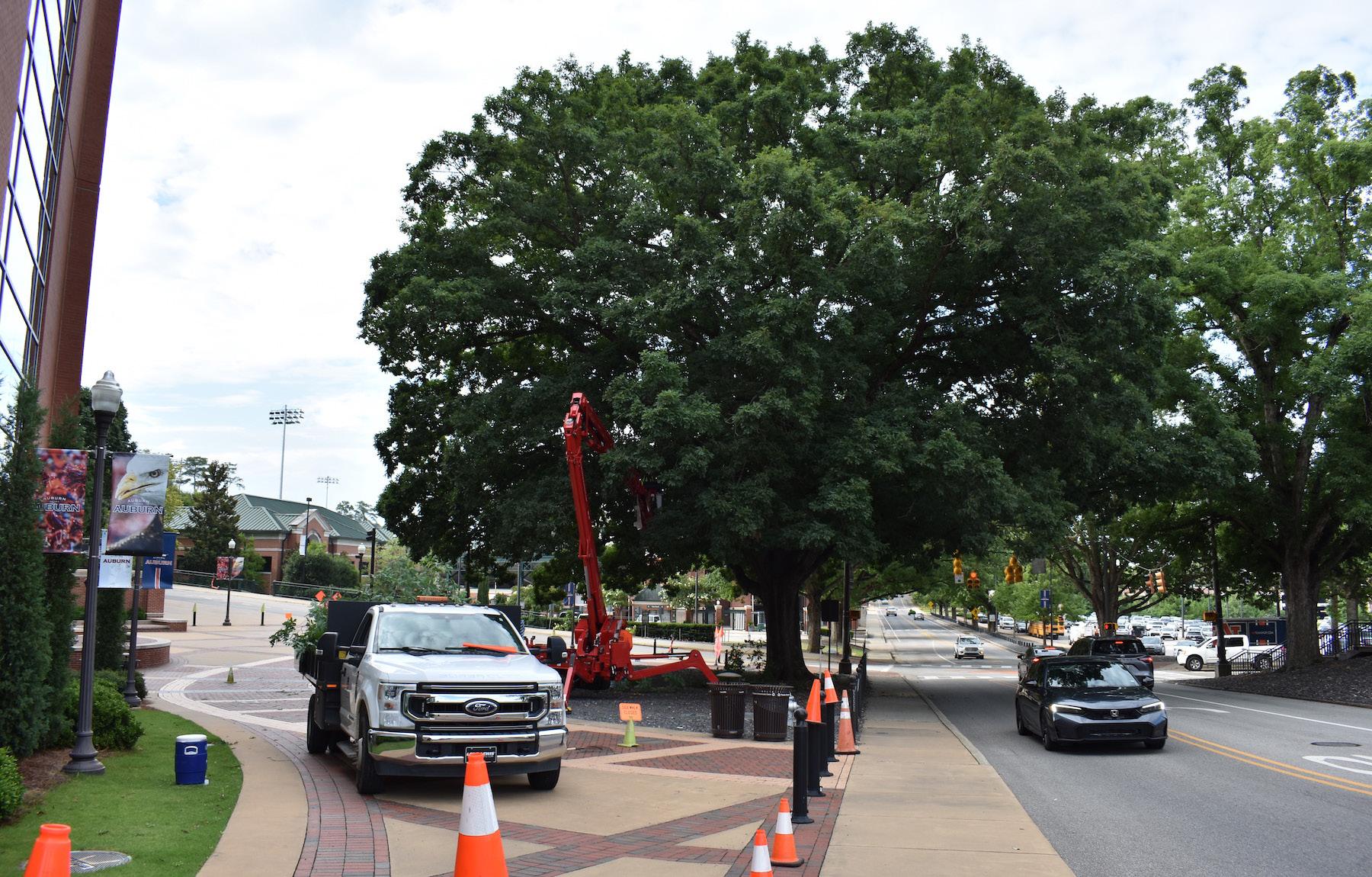
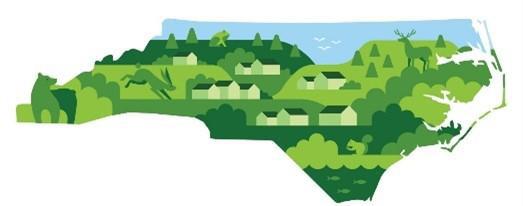
Green industry's economic impact
By Leslie Moorman, NC Director
A view from the Loveliest Village on the Plains:
Auburn University arborists, who work year-round to keep the campus canopy healthy and safe, are especially busy in the summer before students return and football season gets underway.
This month, crews have been pruning the avenue of oaks where Tiger Walk takes place on Donahue Drive. Auburn fans may recognize this tree framing the team’s entrance to Jordan Hare Stadium, where the crew has set up their CMC Arborpro HD90 Series aerial lift.
The Auburn University tree care team is led by ISA-certified arborist Alex Hedgepath, who is quick to note they are hoping to get the lift painted another color.

I was attending the 2025 Water & Soil Symposium hosted by the NC Green Industry Council (NC GIC) and learned that an updated green industry economic impact study had been completed by NC State University. Did you know such a thing existed?
NC’s green industry is made up of nursery and floriculture producers, lawn and garden equipment/retailers, landscaping services, landscape architectural services, florist retailers, AND urban forestry/arboricultural services. The green industry, as a whole, contributed $9.5 billion in industry output to NC’s economy in 2023. It is exciting to see urban forestry and arboriculture be an important part of NC’s economy. The full report can be found on the NC GIC website and will be available at the NC Urban Forest Council's 16th Annual Great NC Tree Conference, Sept. 11-12 in Greensboro.
RESILIENCE IN THE FOREST: The American Chestnut lives on
By Matthew Searels, former Southern Chapter President and VP at Eocene Environmental Group

During my recent ordeal of the Hellbender 100 ultramarathon, I had the opportunity to experience the rugged beauty of western North Carolina and came across something truly special—several juvenile American Chestnuts (Castanea dentata) quietly growing along the trail.
Once a keystone species in eastern U.S. forests, the American Chestnut was nearly wiped out by a fungal blight (Cryphonectria parasitica) in the early 20th century. At its peak, it made up nearly a quarter of the hardwood canopy in the Appalachians, providing food, shelter, and economic value to countless communities and ecosystems.
But here's the incredible part: they’re not gone! These trees are still sprouting from old root systems, showing a tenacity that mirrors the spirit of endurance athletes and conservationists alike.
Why it matters:
• The American Chestnut was a foundational species. Its loss reshaped entire ecosystems.
• Restoration efforts are underway, blending science, breeding, and biotechnology to bring back a blight-resistant population.
• Every juvenile tree we see in the wild is a symbol of hope and resilience.
Let’s celebrate these quiet victories in our forests and support the work being done to restore this iconic species! If you’re out on the trails, keep an eye out—you might just spot a piece of living history.
submitted by Anne Randle, AL Director
Plan to join the ISA Southern Chapter at this PPQ workshop in Charlotte, NC. PPQ is a rising star in the arboriculture world. The event is cosponsored by the Charlotte Arborists Association and the City of Charlotte Urban Forestry Services. Course presenters, Dr. Ed Gilman and Nick Markley, are well-known leaders in the world of arboriculture. Register early! Seats are limited.
PPQ
Prescription Pruning Qualification
November 17-19, 2025 – Charlotte, NC
This is a 3-day course which includes two days of training and demonstrations culminating in an exam. The successful candidate will receive the Prescription Pruning Qualification being recognized nationwide. You must be an ISA Certified Arborist to attend the qualification course. However, it is not required to attend DAY ONE ONLY.
This new pruning paradigm shifts the decision of which branches to prune from the production arborist to an informed prescriber. It establishes a protocol resulting in consistency between the arborist preparing the prescription and the production arborist. This credential teaches you how to prescribe and perform pruning in accordance with industry standards and ISA’s BMP, which is supported by the latest research and experience.
PRESENTERS
Dr. Ed Gilman and Nick Markley

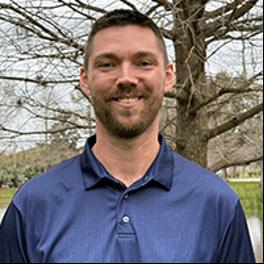
The workshop will run from approximately 8am - 4pm each day. Light breakfast & lunch on Days One and Two. Light breakfast on Day Three. 14 ISA CEUs are pending. Find more details here.
SPONSORS


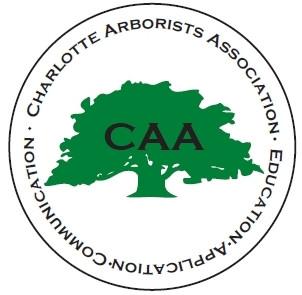
REGISTRATION
TWO TRACKS
PRESCRIBERS
Day One, Two, and Three: Nov 17-19
Must be an ISA Certified Arborist. Prescribers attend Day One and then return for Day Two and the review and exams on Day Three.
The Day Two and Day Three of training focus on preparing pruning prescriptions using many examples which include outdoor exercises. This is an interactive program with many activities.
There is a review and a multiple choice exam on the third day. Those passing the exam become PPQ Qualified.
PRODUCERS
Day One only: Nov 17
ISA Certification not a prerequisite. This is a one-day session with extreme value for those who work in trees.
Dr. Gilman provides attendees with an understanding and appreciation of proper pruning based on clear goals and communication.
Producer attendees receive a certificate of attendance. There is no exam.
2025-2025 State Directors
Alabama: Anne Randle
Green Business Certification, Inc.
Arkansas: Brian Pope
ACRT
Louisiana: Fred Fellner
Mississippi: Steve Dicke
Shady Arbor PLLC
North Carolina: Leslie Moorman Town of Cary
Puerto Rico and U.S. Virgin Islands: Christian W. Torres Santana Coccoloba AgroEnvironnemental Consulting and Coccoloba Nursery
South Carolina: Paul Mitchell Wright Tree Service
Tennessee: Hannah Imagine Shaw
SiteOne Landscape Supply
At-Large: (open)
Southern Chapter ISA Website: www.isasouthern.org
Phone: (314) 215-8010
Email: isasouthern@isasouthern.org
Skip Kincaid, Exec. Director 1609 Missouri Avenue St Louis, MO 63104
To contact your State Director, a member of the Executive Board, or Skip Kincaid at the Southern Chapter office, please email isasouthern@isasouthern.org.
2025-2026 Southern Chapter Officers
President: Chris Diffley, Arbor Ki Tree Solutions
President Elect / Treasurer: Brian Watkins, Recreation and Park Commission for the Parish of East Baton Rouge
Vice President: Dena Whitesides
Component Council Rep: David Vandergriff, Griff Arbor|Hort Tree Climbing Championship: Scott Winningham
TREE Fund Liaison: Matt Searels, Eocene Environmental Group
Past President: Hallie Dozier, LSU AgCenter
Media Director and Editor: Sarah Mitchell
Conference Planner: Connie Hilson
Executive Director: Skip Kincaid Have you been waiting

Facebook Enjoy daily posts of things to make you think and things to make you laugh.
LinkedIn Find news, articles, and educational information. This is where green-industry professionals gather.
Instagram Just the jokes, please.
Community
Please share, like, and subscribe to our many social media accounts: Facebook, Instagram, and LinkedIn.



Encouragement
Share the word about our scholarship program (application here). Here’s a chance to assist the next generation of green-industry professionals.
Sharing
Connection
Submit a Member Spotlight form about yourself or interview a colleague for a chance to be highlighted in our quarterly newsletter. Please reach out to newsletter@isasouthern.org for the form request and submittal.
Learning
Look for educational opportunities on the Southern Chapter website. If you know of opportunities not listed, email us and we’ll post it.
What’s happening in your part of the Southern Chapter?
Send in an article for our quarterly newsletter.
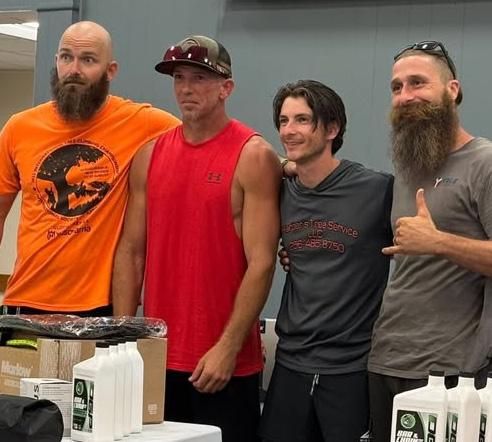
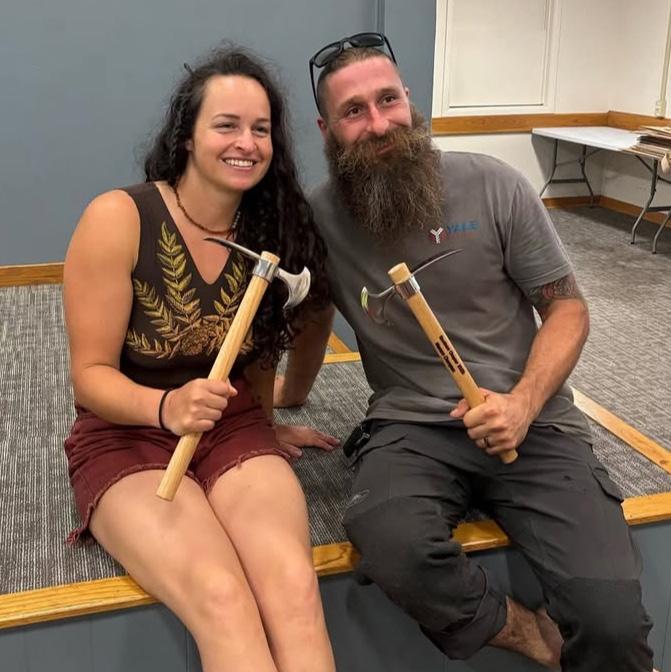

Results (W): Nikki Cooper in first place Becca Haught in second place
Results (M): Shawn Welch in first place Fletcher Harper in second place
2025 Southern Chapter TCC is a wrap! We dodged a few storms, but couldn’t escape the heat.
Many thanks to the TCC committee, dedicated volunteers, and the climbers and their families. We are indebted to the fine Southern Chapter family who shared pictures on Facebook and Instagram so that we could share them with all of you!
